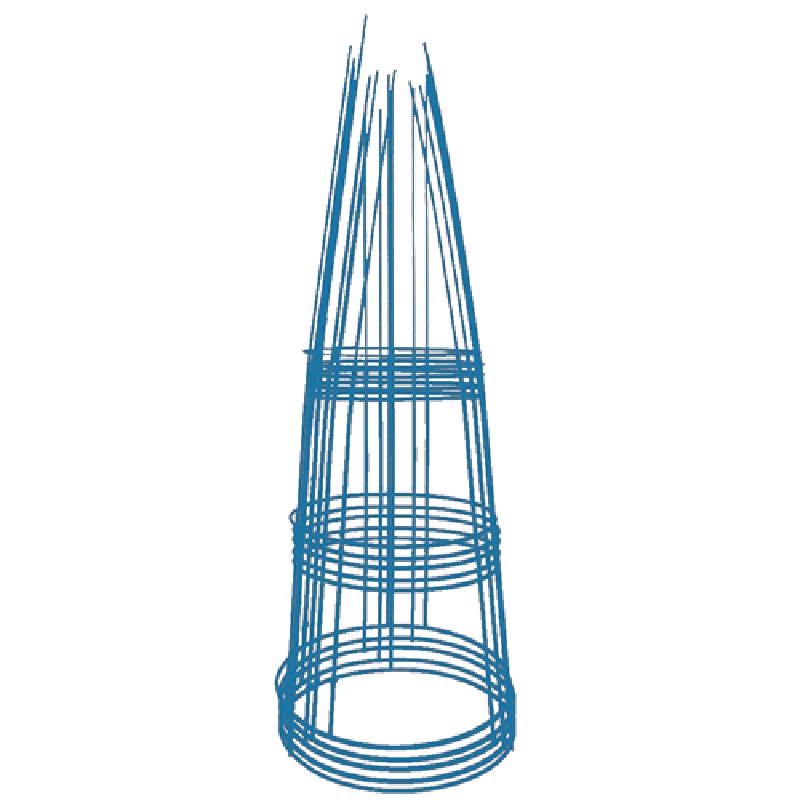
- Mobile Phone
- +8613931874955
- sales@cntcmetal.com
Optimizing Wall Tie Placement for Effective Structural Support in Cavity Wall Construction
Wall Ties for Cavity Walls An Essential Component in Construction
Cavity walls are a popular construction method used in modern buildings, particularly in regions with variable weather conditions. This construction technique involves two parallel walls separated by a hollow space, or cavity, which serves several purposes, including thermal insulation, moisture control, and sound attenuation. However, the effectiveness and stability of cavity walls largely depend on the presence and proper installation of wall ties.
What Are Wall Ties?
Wall ties are metal or plastic components that connect the outer and inner leaves of a cavity wall. Their primary function is to ensure structural integrity by tying the two walls together, preventing them from moving apart or collapsing under stress. They also help in transferring loads from the outer wall to the inner wall, thus contributing to the overall strength of the structure.
Types of Wall Ties
Wall ties are available in various materials and designs to meet different construction needs. The most common materials include stainless steel, galvanized steel, and plastic. Stainless steel ties are favored for their corrosion resistance, making them suitable for buildings in coastal areas or those exposed to moisture. Galvanized steel ties offer a cost-effective alternative, whereas plastic ties are often used in specific applications where thermal efficiency is a priority.
The Importance of Proper Installation
The effectiveness of wall ties relies heavily on their correct installation. The ties must be placed at regular intervals and at the right locations within the wall cavity to ensure optimal load distribution. As a guideline, it is common to use ties every 600 mm horizontally and 1,200 mm vertically, although local building codes may dictate specific requirements.
wall ties for cavity walls

Installing wall ties requires attention to detail, particularly in ensuring that they are embedded securely in both leaves of the wall. The ties should be positioned in such a way that they do not compromise the insulation properties of the cavity. Failure to install them correctly can lead to a multitude of issues, including structural failure, moisture ingress, and increased heat loss.
Building Regulations and Standards
In many countries, building regulations specify the use of wall ties in cavity wall construction. These regulations often dictate the minimum requirements for material, spacing, and installation methods to safeguard against structural integrity issues. Adhering to these standards is crucial not only for the safety of the building but also for the longevity and performance of the wall system.
Maintenance Considerations
Regular inspections are essential to ensure that wall ties remain effective throughout the lifespan of a building. Over time, environmental factors such as corrosion, moisture intrusion, or physical damage can compromise the performance of wall ties. In cases where problems are identified, timely repairs or replacements can prevent more severe structural issues.
Conclusion
In summary, wall ties play a vital role in the stability and performance of cavity walls. Selecting the appropriate type of wall tie, ensuring correct installation, and adhering to building regulations are all crucial steps in the construction process. By understanding and implementing these guidelines, building professionals can enhance the durability and safety of cavity wall structures, ultimately contributing to the resilience of modern architectural designs. Proper maintenance and periodic inspections further ensure that these critical components remain effective throughout the life of a building, providing peace of mind for both constructors and occupants.
share:
-
Your Source for Concrete Wall Ties and Masonry AccessoriesNewsJul.10,2025
-
Unlocking the Power of Iron Wire for Every ProjectNewsJul.10,2025
-
Explore Advanced Chain Wire and Stainless Steel Mesh FencingNewsJul.10,2025
-
Discover the Benefits of Annealed Wire ProductsNewsJul.10,2025
-
Discover China Stainless Steel Wire Mesh SolutionsNewsJul.10,2025
-
Build with Confidence Using High-Performance Masonry AccessoriesNewsJul.10,2025
-
Why Sacrificial Formwork Is Redefining Underground ConstructionNewsJun.06,2025



















